Yorke Peninsula, to the west of Adelaide, surrounded by Spencer Gulf and Gulf St Vincent, was discovered by Europeans in 1802. While both Matthew Flinders and Nicolas Baudin mapped the coastline, many of its distinguishing features still bear the names given by Flinders. The leg-shaped peninsula, 205km long and an average of 40km wide, is relatively flat apart from the lower Hummocks Range in the northeast. Kadina is the peninsula’s largest centre.
The Narungga nation
The Narungga nation once ranged over the entire peninsula, but their population declined after white settlement. With the aim of protecting and converting the remaining few Indigenous people, in 1867 a Protestant mission was established at Point Pearce, where a small Aboriginal community is still located. Narungga people live in most towns on the peninsula and are involved in various fields of employment including teaching, nursing and childcare. Until the 1960s, Aboriginal shearing teams were a part of farming life on Yorke Peninsula, while an Aboriginal team competed in the local football league.
People of Narungga descent have been prominent in the Australian Football League (AFL). Gavin Wanganeen (1993) while at the Essendon Football Club and Wallaroo-born Adam Goodes (2003 and 2006) at the Sydney Swans have won the AFL’s annual award as the best and fairest player in the competition. Others to have played with distinction include Shane and Troy Bond, Colin Graham, Eddie Hocking, and Michael and Ricky O’Loughlin. In more recent years the number of Aboriginal players in all AFL teams has grown considerably but it was those men who paved the way for this natural talent to shine through.
European Settlement
In 1840 Thomas Burr and John Hill discovered good pastoral lands on the northern Yorke Peninsula, leading to the establishment of winter pastoral leases and division into sheep runs by the early 1840s. Pastoral leases in the north and south included ‘Moorowie’, ‘Ynoo’, ‘Pareora’, ‘Yarraroo’, ‘Werocatta’ and ‘Hummocks and Barunga’ sheep stations. But the disadvantage of poor water supplies, often only soaks behind sand hills which had been sufficient for the Narungga people, inhibited European development.
In the larger towns during the 1870s and 1880s there were epidemics of cholera and typhoid, largely attributable to the lack of potable water. Piped water, replacing that from underground tanks, dams and windmill-powered wells, arrived in the 1890s. However, some outlying farms and holiday settlements remain unconnected to water schemes today.
Mining
The first major copper discovery was on 17 December 1859 on the Wallaroo sheep station leased by Walter Watson Hughes. Four Cornish miners – Walter Phillips, Richard Truran, William Pascoe and Richard Walter – were recruited from Burra and sunk costeen pits and dug shafts in the area now known as Wallaroo Mines. Fifteen months later a second large copper find was made at Moonta Mines. At the peak of mining on Yorke Peninsula, the Copper Coast area (Kadina, Moonta and Wallaroo) was the most populous in provincial South Australia.
The most prominent manager of mines in South Australia was ‘Captain’ Henry Richard Hancock. He eventually ran both mines and oversaw the smelting works at Wallaroo which was run with a Welsh workforce. He was an intuitive mine manager and an excellent mining engineer for his tenure of 34 years, retiring in 1898. His son, Henry Lipson Hancock, took over from him and he retired in June 1922. The mines and the Wallaroo smelters closed in the following year.
Sporadic copper mining and reclamation has continued since then with recent discoveries of copper and gold at Willamulka and near Ardrossan. Gypsum was mined at Inneston and Stenhouse Bay. One Steel’s dolomite mine at Ardrossan, and limestone quarries at Wardang Island and Klein’s Point have also been significant.
With the establishment of the mining towns of Kadina, Moonta and Wallaroo Mines, the demand for hay, milk, butter and bacon grew substantially and farmers lobbied parliament to open up nearby pastoral lands for cropping. Wheat was first grown on the peninsula at Greens Plains in 1866.
Large numbers of Cornishmen left the mines and set up farms in areas such as Alford, Tickera, Bute, Maitland, Curramulka, Kulpara, Minlaton, Port Victoria and Agery. Once the farmers had built their small homes, typically of limestone and pug, they erected modest Methodist churches at cross roads.
In 1996, the small town of Alford had the highest per capita proportion of Uniting Church adherents in the state. Lutheran farmers from the Barossa Valley settled in southern and central Yorke Peninsula after 1870 and Lutheran churches and schools became a feature of these communities.
Farming
Farming remains the chief industry of Yorke Peninsula. Wheat and barley were the main crops in the nineteenth century and the first half of the twentieth century. The stump jump plough was of great benefit to the grain growers of Australia as it enabled land to be brought into cultivation despite the presence of stumps and rocks. This invention in 1876 by the Smith brothers, Richard and Clarence of Kalkabury (later Arthurton), was followed by the manufacture of the ploughs in large numbers at Clarence’s factory at Ardrossan. In 1907 the extensive Ardrossan factory was regarded as the most modern in the southern hemisphere.
The Yorke Peninsula Field Days commenced in 1894 at Bute where farmers were able to trial new plant and machinery. The event is now held biennially at Paskeville and it is regularly attended by approximately 40 000 people.
There has been a move away from mixed farming (sheep, wheat and barley growing) to producing high quality grains and legumes. In recent years legumes, hay and canola have been successfully introduced. In addition, Maitland is the only grape growing area on the peninsula.
Howard Bourne of Pine Point was an early protagonist in developing the concept of bulk grain handling. In the 1950s the agricultural engineers Bourne and Eckersley of Ardrossan designed and built two of the most popular stone rakes and loaders. The peninsula has much limestone in grain growing areas and these simple machines made it easier to collect and dispose of the surface stones.
Trade and Shipping
The peninsula is renowned for its malting barley, the best quality grain used for brewing beer. Malting barley is widely grown in the south of the peninsula; Minlaton is known as ‘The Barley Capital of the World’. Anthony Honner of Brentwood was a prominent member of the Australian Barley Board for many years.
In 1997, a large pasta company established silos at Kulpara for Durum (pasta wheat) for both domestic and international consumption. A large hay plant was established in 1993 at Thomas Plains to process hay for stock feed in Japan and for local livestock producers.
Around the coast, small jetties catered for the grain trade until the early 1950s. Ketches and small sailing vessels loaded bagged grain for shipping to large ports such as Wallaroo and, ultimately, to overseas markets.
The last square-rigged sailing ships left Port Victoria for European markets in the winter of 1949. These were the Pamir on 28 May and the Passat on 1 June. By the mid-1950s, large grain silos were being built at towns and ports on the peninsula. The Ardrossan cement grain silos were the first to be built in South Australia and opened 25 November 1952. The conveyor belts and jetty infrastructure had been built by the Broken Hill Proprietary Co. for its dolomite resources in 1948. Currently, the terminals and ports of Wallaroo and Port Giles cater for the larger grain shipping.
Industry
The process of harvesting salt from the sea at Price and other sites provides employment and economic benefits. Wind farms are now a feature of the landscape and are used for generating electricity on high windy points of the land. First established at Edithburgh in 2004, they also dominate the skyline at Barunga Gap on the top of the Hummocks.
Fishing is based at ports such as Port Broughton, Tickera, Wallaroo, Moonta Bay, Port Victoria, Pondalowie, Marion Bay and Edithburgh. This industry has always played a part in the region’s economy. Prawn boats use Wallaroo as a base. Increasingly, aquaculture, oyster leases and a crab-processing factory provide employment and financial benefit.
The rugged coast and the reliance on shipping vessels for transport saw many ships traverse the seas around the peninsula in the nineteenth century and the first half of the twentieth century. But there were many shipwrecks such as the Ethel, Ferrett, Clan Rannald, Zanoni and Notre Damae D’Avor.
Transportation
Passenger shipping between Wallaroo and Cowell on the Eyre Peninsula ceased in the early 1950s. In the twenty first century a car and passenger ferry service began operating between Wallaroo and Lucky Bay, adjacent to Cowell. With increased mining activity on Eyre Peninsula and more tourist traffic generally, the ferry is an asset to both peninsulas.
Proposals were drawn up in the nineteenth century to include towns such as Maitland in a rail system, but an extensive network was not considered feasible. The rail services that were established ceased in the mid 1980s when the last freight trains ran on the Snowtown–Bute–Kadina–Wallaroo line. Trains from Port Wakefield through to Melton, Paskeville and Moonta ceased on 20 March 1982; to recognise the occasion, a passenger train was chartered by the Railways Historical Society.
Sport
Sport has been an important facet of life on the peninsula. Cricket was popular and in 1874 the touring WG Grace XI and the Miners XXII played a match on the site of the Kadina and Wallaroo Racing Club course. Australian Rules Football continues to be a major activity on the peninsula despite the series of amalgamations of football clubs and leagues that has taken place. In addition to the Indigenous footballers mentioned above, prominent footballers who have lived on Yorke Peninsula include Rick Davies, Richard Champion, Charlie Arbon, Ron Kneebone, Bob Quinn, Jack Broadstock, Neil Craig, Keith Warrior and Jack Oatey.
Polocross, pony clubs, trotting, horseracing, dressage, golf, bowls, croquet, hockey, netball, tennis, basketball, table tennis, darts, pistol and rifle shooting as well as baseball, softball, calisthenics and sports aerobics, cycling, athletics, quoits, Cornish wrestling, swimming, surfing, rowing and sailing, greyhound coursing, sheep dog trials and pigeon racing have all had a place in the sporting life of the peninsula. Sue Twelftree (tennis and power lifting) and Grace Bowman (dressage) have competed in international competitions as well as the Paralympic Games. A soccer league commenced in the twenty first century.
Tourism
Since the beginning of the twentieth century tourism has been of ongoing importance to Yorke Peninsula. Many former small ports have evolved into seaside towns with second homes for holidaying families.
In 2010, Yorke Peninsula residents numbered 27 405 but the number of people in the region rises to approximately 62 000 during holiday times. In the District Council of Yorke Peninsula 48% of all houses are used as second homes. In the District Council of the Copper Coast the figure is 35%. The District Council of Barunga West has a percentage of 53%.
Minescapes at Wallaroo Mines, Wheal Hughes and Moonta Mines with traditional Cornish mining industrial architecture and the Welsh smelting architecture are a part of heritage tourism. Majestic cliffs and scenery at the ‘Bottom End’, clean white sandy beaches, a Mediterranean climate, farmers’ markets combined with museums attract tourists. A major festival, the biennial Kernewek Lowender, has grown to be the world’s largest Cornish festival. The festival commenced in 1973 as a three-day festival and has been extended to a six-day event. Up to 40 000 people, including interstate and overseas attendees, focus on the region’s history and present lifestyle.
In 1970, the Innes National Park was created around Inneston and Stenhouse Bay and that now has an estimated 140 000 visitors annually. The park is a refuge for many types of Australian fauna along with its spectacular coastal scenery. Holiday settlements such as Corny Point, Pondalowie and Point Turton on the southern portion of the peninsula attract many tourists.
Arts and crafts are popular with locals and tourists alike. Allyson Parsons of Port Vincent is an especially gifted artist whose works in oils and acrylics are much in demand. In the performing arts, the cousins Ronnie Taheney, singer/songwriter, and Fiona O’Loughlin, comedian, are from Warooka.
Local Government
Local government is by the District Council of Yorke Peninsula (covering the central and lower peninsula), the District Council of the Copper Coast (covering the most populous area with the towns of Paskeville, Moonta, Wallaroo and Kadina and surrounding areas) and the District Council of Barunga West (covering the top of the peninsula, including many small settlements, from its base in Port Broughton). The Copper Coast Council has seen extensive residential building in the twenty first century and medium-sized businesses, retirement units, nursing homes and a school have been established in Kadina, Moonta, Wallaroo and Port Broughton. Nursing and aged care homes are also at Maitland, Minlaton, Stansbury and Ardrossan. Apart from the state primary, high and area schools, the peninsula has two Sisters of St Joseph schools, and the Harvest Christian and Maitland Lutheran schools.
Notable People from Yorke Peninsula
Kate Cocks, the British Empire’s first female police officer, was born at East Moonta. The premiers of South Australia have included John Verran and Bob Richards of Moonta and John Olsen of Kadina. Moonta-born John Scadden was premier of Western Australia. Sir Harold Young of Alford and Alan Ferguson of Weetulta have been presidents of the Senate in Federal Parliament.
The mother of Prime Minister Bob Hawke (1983–1991), Elsie Lee, was a daughter of a Cornish farming family from Boors Plains and a school teacher. Bob’s father, Clem Hawke who was also of Cornish descent, was a congregational minister and was stationed at Maitland where Bob attended school between 1935 and 1938.
Aviator Captain Harry Butler was the first person in the southern hemisphere to carry air mail across water when he flew 90km from suburban Hendon in Adelaide to Minlaton in 1919.
One of the founders of the Royal Australian Air Force, Sir Richard Williams, was born at Moonta Mines in 1890 and rose from a newspaper delivery boy, to telegram boy, a Kadina bank clerk and then served in the Royal Australian Army from where he joined the Australian Flying Corps to become one of Australia’s first defence pilots. He is commemorated on the peninsula with the Kadina/Wallaroo aerodrome being named in his honour.
Mining, farming, fishing, shipping and tourism have been the long term industries on Yorke Peninsula. The people of the ‘ill-shaped leg’ have a great lifestyle with many opportunities to enjoy the special benefits of living on the peninsula.


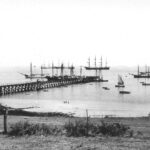

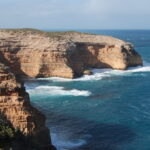
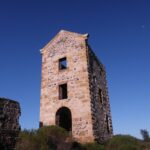
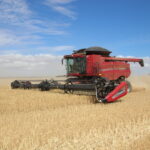
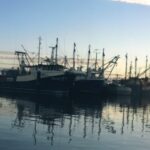
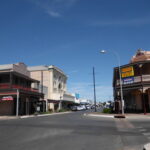
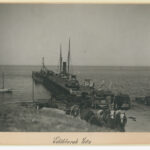
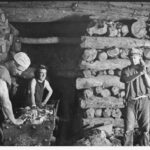
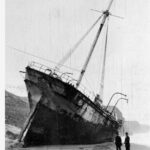

Comments
2 responses to “Yorke Peninsula”
In clearing a deceased estate we have a marriage certificate from 1887 at st Margaret’s church in Paskerville.
If you are interested or can refer me to another group who are, I am happy to mail it to you.
Kind regards
Sue
Hi Sue,
I’ve sent you an e-mail with information on how to get in touch with our acquisition committee.